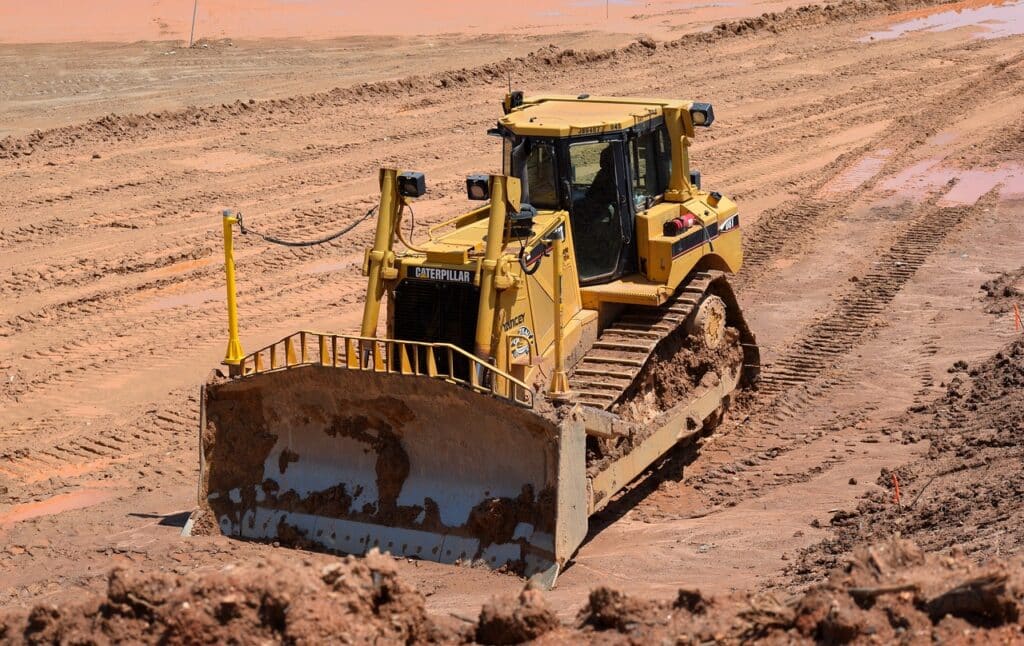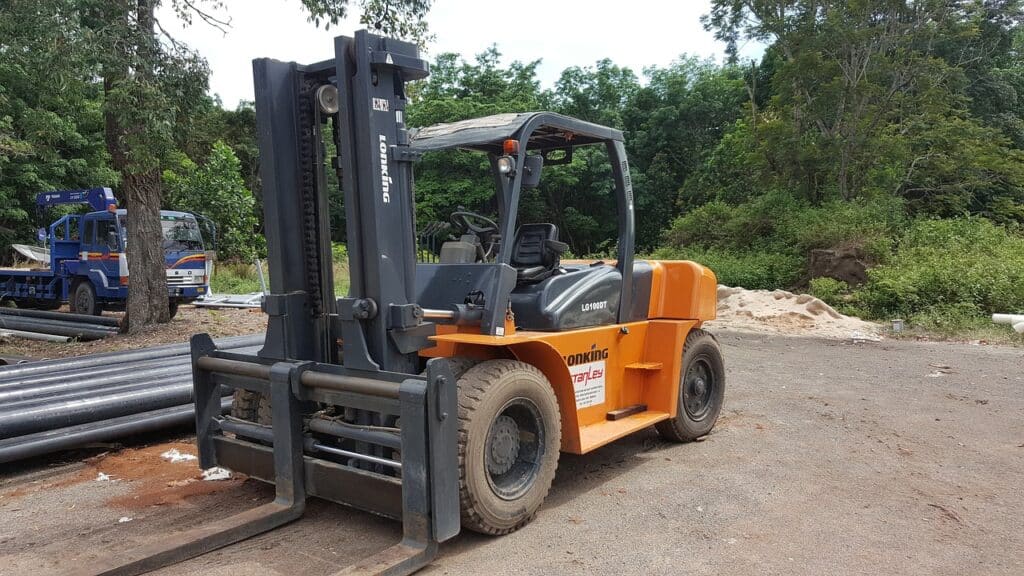From construction and mining industries to logistics, heavy machinery takes much of the spotlight in getting the job done. These machines come in various shapes and sizes, fitting for the construction landscape and other projects.
If you’re in this field, it’s important to familiarize yourself with the vehicles used in construction, including their functionalities. Understanding how these vehicles work ensures a smooth application of their power and precision in your business operations.
10 Common Types of Vehicles Used in Construction
The construction industry requires heavy-duty vehicles that can carry out many functions. Here are some of the most common construction vehicles used in the industry today.
1. Bulldozer

Bulldozers sport a huge front blade for pushing, digging, and leveling soil. Some even have rear rippers to break down rock and soil.
2. Bucket truck

Bucket trucks have an extendable boom attached to a large bucket for transporting personnel and materials to inaccessible, elevated areas in the construction site.
3. Compactor

Compactors are construction vehicles with a heavy roller that applies downward pressure on the soil to make it more compact and prevent erosion. They can also flatten and smoothen road surfaces for highway construction.
4. Concrete mixer

Concrete mixers or trucks blend cement, sand, and water into concrete with a rotating drum. Portable concrete mixers are also available for smaller cement needs on-site, offering enough working time before concrete sets.
5. Dump truck

Dump trucks are vehicles with a large tub for carrying, removing, and transporting materials. There are three types of dump trucks. These are:
- Standard – lifts the tub from front to back
- Side Tilting – lifts the tub from either side
- Bottom Dump – opens the tub in a clamshell movement
6. Excavator

Excavators comprise a bucket, boom, dipper, and cab on a rotating platform atop a tracked or wheeled undercarriage. They vary in size; smaller ones are compact or mini excavators. Excavators dig holes, trenches, and foundations. Meanwhile, hydraulic hammers make excavators efficient for mining, demolition, forestry, construction, material handling, and more.
7. Forklift

Forklifts move hefty loads on sites or in warehouses. Their variety, from pallet jacks to telehandlers, offers diverse load capacities. These machines raise and lower forks and tilt them to balance uneven loads and prevent slipping, making them indispensable across construction sites.
8. Loader

Loaders carry and sift construction materials like dirt, asphalt, and rocks. Whether wheeled or tracked, they resemble mobile shovels, transferring materials from ground stockpiles to trucks. Loader types include front, bucket, scoop, skid-steer, and payloaders, each with distinct purposes. These vehicles may also feature permanent or removable attachments with adjustable buckets for versatility.
9. Mobile crane

Mobile cranes hoist items from the ground to higher elevations in the construction site. With either crawlers or tires as support, mobile cranes offer enhanced mobility compared to stationary ones. These cranes maneuver efficiently on the roads of construction sites while carrying substantial loads, making them popular in development projects.
10. Tractor

In the construction industry, tractors are versatile pieces of machinery as they can accommodate different attachments—from buckets to rollers and dozers—suitable for a particular purpose.
4 Specifications to Consider When Buying Construction Vehicle Tires
Construction vehicles can perform complicated, laborious tasks and need rugged tires to operate in harsh conditions. Below are considerations to get the best tires for your vehicle.
1. Tire belt
The tire belt is a layer of rubber-coated steel or fabric that is sandwiched between the tread and plies. This part of the tire helps provide resistance to punctures and keep the tread in contact with the road.
Radial tires offer a larger contact area with the road. They allow a smoother ride, better fuel efficiency, and longer tread life. Radial tires also generate less heat, making them suitable for prolonged highway use. While more expensive, their performance and longevity often justify the cost.
Conversely, bias ply tires are ideal for heavy-duty off-road use or carrying heavy loads. They’re more affordable and can provide good traction in specific conditions. However, they often have a shorter lifespan and can generate more heat during operation.
2. Tread design
A wide, aggressive tread pattern brings exceptional handling capabilities, impressive traction, and lateral adhesion. This design choice enables construction vehicles to navigate diverse terrains confidently and safely, ensuring stability and grip even in challenging conditions.
3. Tire construction
A rigid casing offers better resistance against impacts and cuts, providing vital support during rugged operations. A robust shoulder and enhanced sidewall also withstand damage and aggressive conditions. These qualities can tackle challenging terrains and tasks with durability and resilience, minimizing downtime and maximizing productivity on the job site.
4. Tire tubes
The lack of inner tubes in tubeless tires maintains air between the rim and tire through an airtight seal. Tubeless tires with tough casing offer better puncture resistance. Even if punctured, air escapes slowly, maintaining pressure and allowing ample time for sealing. Additionally, their open-pattern treads also grip well and adapt to most surfaces.
Tough Tires for Your Construction Vehicles
Whether you need a bulldozer or a mobile crane, it’s best to inspect the tires your construction vehicle comes with. To ensure reliability, always go for quality tires. Triangle Tires offers a range of tires for passenger cars, light trucks, and heavy equipment vehicles. Enjoy premium performance without straining your budget. Browse our tire catalog, or contact us to discuss your tire needs.